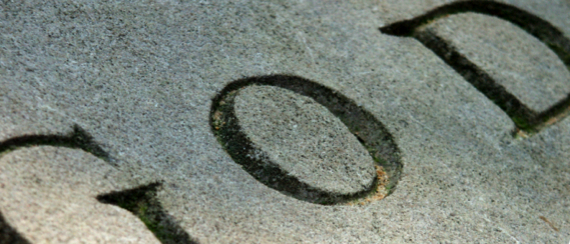Within two generations, the Jewish followers of Jesus (under the influence of Paul) had largely given up their Jewish practices, setting a precedent that has remained the same right up until today: Jews who become Christians lose all connection to Judaism within two generations.
Within two generations, the Jewish followers of Jesus (under the influence of Paul) had largely given up their Jewish practices, setting a precedent that has remained the same right up until today: Jews who become Christians lose all connection to Judaism within two generations.
Within two generations, the Jewish followers of Jesus (under the influence of Paul) had largely given up their Jewish practices, setting a precedent that has remained the same right up until today: Jews who become Christians lose all connection to Judaism within two generations.
Your facts are completely wrong. We know there were Sabbath-keeping, Hebrew-reading, Torah-revering Jewish followers of Jesus for at least the first four hundred years of church history. This was despite the fact that these Messianic Jews were excluded from the synagogue by Rabbinic Jews and misunderstood by Gentile Christians. In our own day, there are fourth and fifth generation Messianic Jews, some of whom have made aliyah and whose children now serve in the Israeli army. Again, this has happened despite pressure from the traditional Jewish community and occasional misunderstanding from Gentile Christians.
In previous answers (above, 2.6–2.7), I explained to you that the first followers of Jesus, all of whom were Jews, were often persecuted by fellow Jews who rejected him. Then, around the year 90 c.e., key rabbinic leaders decided that a prayer (actually an imprecation or curse) against the “heretics” would be recited in synagogues in order to weed out any possible Messianic Jews. Their identity would be known at once because they would not be able to recite a curse directed against themselves. 275
What you must grasp is this: The Rabbinic leaders did this because these Jewish disciples of Yeshua were still attending synagogue more than sixty years after the Messiah’s death and resurrection. That means that the grandchildren of some of the first Jewish believers had not yet exited the synagogues en masse. In fact, Jacob (James), the brother of Jesus, was a highly regarded Jewish leader whose stoning at the behest of a Sadducean high priest caused an uproar among many of the Jews. 276
Of course, Jesus had warned his followers that such a time would come (see John 16:2, “They will put you out of the synagogue”), but the thing that should catch your attention is that these Jewish believers were put out by other Jews; they did not simply walk out.
In spite of this harsh treatment, which included painful social ostracizing, Jewish believers continued to be faithful to both their Messiah and their heritage, rejecting the binding authority of the traditions of the rabbis but holding to the written Scriptures. 277 As the church became increasingly Gentile—quite a natural development when you think of the thousands of Gentiles who came flocking to the God of Israel when they were told the good news about Jesus the Messiah—something very unnatural began to happen. The church began to forget its Jewish roots (how strange!), looking with suspicion at these Messianic Jews (called Nazarenes) who adhered to the gospel and the Torah. In spite of all this, these Jewish believers continued steadfast in their faith for centuries.
A number of prominent Gentile Christian leaders wrote about them, generally listing the same, key characteristics: They adhered to the Torah; some of their New Testament books were written in Hebrew (or Aramaic); 278 and they held to the fundamental teachings of Jesus and his emissaries. 279 It is false, therefore, to claim that Jewish followers of Jesus assimilated into the Gentile culture within two generations.
There are also some major political factors you need to consider. According to our best reconstruction of the events, when Jerusalem was being attacked by the Romans in the late 60s of this era, Messianic Jews fled to the city of Pella (now in Jordan), having been forewarned by Jesus that the city and temple would be destroyed. (Cf., e.g., Matthew 24:15–16: “So when you see standing in the holy place ‘the abomination that causes desolation,’ spoken of through the prophet Daniel—let the reader understand—then let those who are in Judea flee to the mountains.”) This apparently was viewed with disfavor by other segments of the Jewish community, who considered it an act of betrayal. 280
Sixty years later, when Simeon Bar Kochba launched his war against Rome in 132 c.e., it is possible that Messianic Jews would have been willing to join in the revolt, except for the fact that he proclaimed himself to be the Messiah. As a result, they could not fight on his behalf and were, in turn, severely persecuted by this valiant but ruthless general. 281 Thus, Yeshua’s Jewish followers faced resentment, exclusion, opposition, and even violent persecution from their own people, yet many of them still remained loyal Jews.
Now, I have no question whatsoever that throughout history numerous Jews who have put their faith in Yeshua have assimilated into the surrounding (church) culture, but this was not the norm in the beginning, and it is changing again in our day. For example, in the last twenty years, many Messianic Jews have made aliyah to Israel, so that their children are now involved in every facet of society—including serving in the Israeli army—and their children’s children will be native born (called sabras in Hebrew). We have also reached a point today, even in America, in which there are Messianic Jews whose parents, grandparents, great-grandparents, and great-great-grandparents have been Jewish followers of Jesus. 282
In addition to this, true Christians around the world have not only begun to understand and appreciate their Jewish spiritual roots, they have done so with enthusiasm, recognizing the importance of Messianic Jewish congregations and doing things such as hosting Passover Seders in their churches and celebrating the Feast of Tabernacles. Yet the Jewish community, from ultra-Orthodox to Reform, has excluded Messianic Jews and deprived them of their rights as Jews, sometimes even refusing to allow their loved ones to be buried in Jewish cemeteries.
Well do I remember the grief experienced by dear Messianic Jewish friends of mine when their fifth child, a nine-month-old baby girl, died of a rare genetic disorder, and the officials of the Jewish cemetery refused to allow them to bury her there. Thankfully, the cemetery quickly reconsidered (albeit under pressure), and the tiny little treasure was laid in the ground in a deeply moving, God-glorifying gravesite service. The words of the father are still fresh in my ears: “I love my daughter very much, but I love God even more”—followed by his recitation of the ancient Jewish prayer called the Mourner’s Kaddish. The mother’s words were equally moving: “I feel very special today, because I have had the joy of being with my daughter for these nine months, and now I have given her to the Lord for him to enjoy.” Does it sting you to think that such godly parents had to go through the scornful rejection of the religious Jewish community within hours of their daughter’s passing?
Yet, this is not only painful, it is ironic too, since some of the rabbis who say, “Jews who follow Jesus lose all attachment to their people and their heritage,” are the very ones who vigorously force us away from our people and our heritage. They tell us we have lost our Jewish roots, and then they call us deceptive when we try to be true to those very same roots. (See also 1.5).
Of course, I could approach your objection here in a different way, pointing out to you that traditional Judaism is not necessarily God’s Judaism—that is to say, it is not necessarily the true faith for our people. It has rejected both the Messianic believers as well as the Messiah, and it has even made void certain portions of the Scriptures (see vol. 3).
The right questions could really be: What does God require of us as Jews? What does he consider faithfulness to our heritage and calling? Perhaps these are the questions we should be asking ourselves as Jews.
275 For discussion and background, see 1.4, n. 9; for the definition and usage of Hebrew mîn minnîm, heretic, schismatic, cf. Herford, Christianity in Talmud and Midrash, along with the more recent discussions in Schiffman, Who Was a Jew?
276 Cf. Josephus, Antiquities, 20.9.1; for detailed historical analysis, cf. Schürer et al., History of the Jewish People, 1:428–41. In this last-cited work, the authors tellingly note, “That various Pharisaic circles entertained friendly relations with Jewish Christians for a long time after the crucifixion is attested, not only by the report on the resentment caused by the stoning of Jesus’ brother at the order of a Sadducaean High Priest, but also by the significant fact that certain communal Christian traditions of Palestinian provenance … depict various Pharisees or other Jews not members of Jesus’ own companionship as harbouring feelings and intentions of friendship for Jesus and maintaining social contact with him” (ibid.).
277 See Ray A. Pritz, Nazarene Jewish Christianity: From the End of the New Testament Period until Its Disappearance in the Fourth Century (Jerusalem/Leiden: Magnes/Brill, 1988). He describes the Nazarenes as “Law-keeping Christians of Jewish background” who were “basically trinitarian” and “did not reject the apostleship of Paul” (108–9). However, they “refused to accept the authority established by the Pharisaic camp after the destruction of Jerusalem, and in so refusing they adjudicated their own isolation from the converging flow of what we call Judaism” (110).
278 For bibliography and discussion, cf. Michael O. Wise, “Languages of Palestine,” in Dictionary of Jesus and the Gospels, ed. Joel B. Green and Scot McKnight (Downers Grove, Ill.: InterVarsity Press, 1992), 434–44; further references are provided in Michael L. Brown, “Recovering the Inspired Text? An Assessment of the Work of the Jerusalem School in the Light of Understanding the Difficult Words of Jesus,” Mishkan 17, no. 18 (1992): 38–64.
279 See A. F. J. Klijn and G. J. Reinink, Patristic Evidence for Jewish-Christian Sects (Leiden: E. J. Brill, 1973); Pritz, Nazarene Jewish Christianity; Bellarmino Bagatti, The Church from the Circumcision (Jerusalem: Franciscan Printing Press, 1984); and note the works cited by Juster, Jewish Roots, 289–94; an important older study is Fenton John Anthony Hort, Judaistic Christianity, ed. J. O. F. Murray (Grand Rapids: Baker, 1980).
280 For discussion and evaluation of this tradition, cf. Pritz, ibid., 122–27, and see further C. R. Koester, “The Origin and Significance of the Flight to Pella Tradition,” CBQ 51 (1989): 90–106, along with the additional works cited in John Nolland, Luke 18:35–24:53, Word Biblical Commentary (Dallas: Word, 1993), 2:985. According to Simon, Verus Israel, 261, “This act, committed in such serious circumstances, took on a symbolic significance. It immediately placed them outside the community of Israel and exposed them to the rancor and hatred of the nationalists.” He adds, however (480, n. 93), “It was nevertheless not this act which provoked the hostility in the first place. It rather presupposes the existence of such hostility. That this already existed is shown by the martyrdom of James, and it was probably in order to avoid fresh acts of cruelty that the community left the city.” For a sociological approach to the general first century conflict, see Jack T. Sanders, Schismatics, Sectarians, Dissidents, Deviants: The First One Hundred Years of Jewish-Christian Relations (Valley Forge, Pa.: Trinity, 1993); for the theological schism, see James D. G. Dunn, The Parting of the Ways: Between Christianity and Judaism and Their Significance for Christianity (Philadelphia: Trinity Press, 1992); note also Vincent Martin, A House Divided: The Parting of the Ways between synagogue and Church (New York: Paulist, 1995).
281 For scholarly evaluations of the evidence surrounding these events, cf. Schürer et al., History of the Jewish People, 1:543–45.
282 To give just one example, the Messianic Jewish scholar Dr. John Fischer comes from such a family. He is, moreover, a strong advocate of Messianic Jews adhering to a scriptural Jewish lifestyle and utilizing Rabbinic traditions wherever appropriate.
Brown, M. L. (2000). Answering Jewish objections to Jesus, Volume 1: General and historical objections. (201). Grand Rapids, Mich.: Baker Books.


